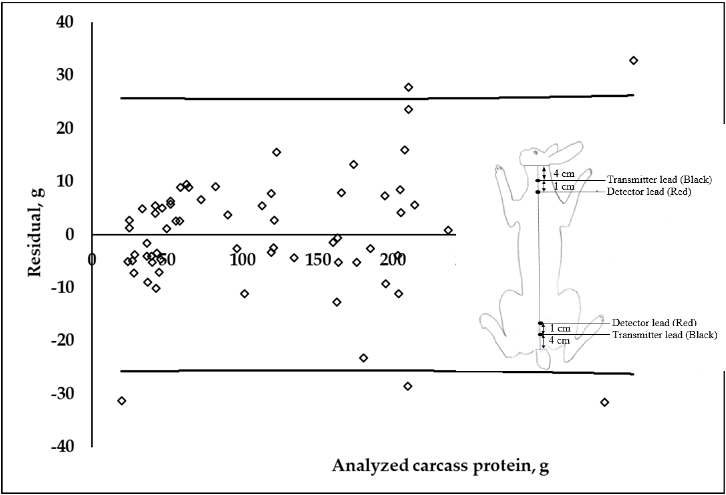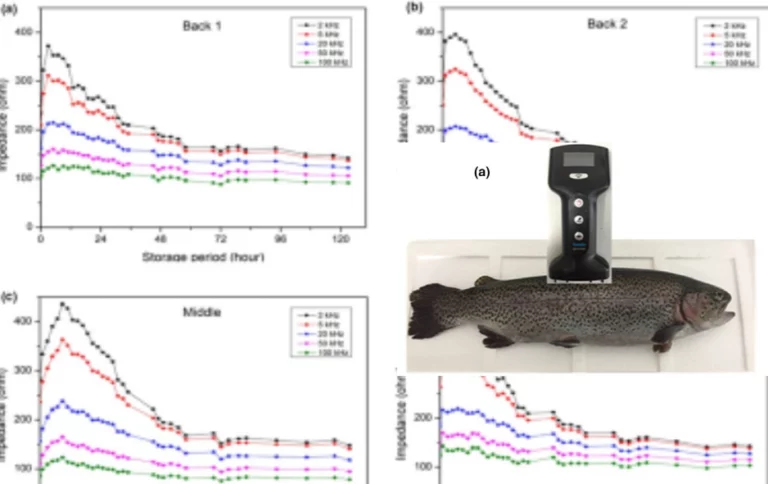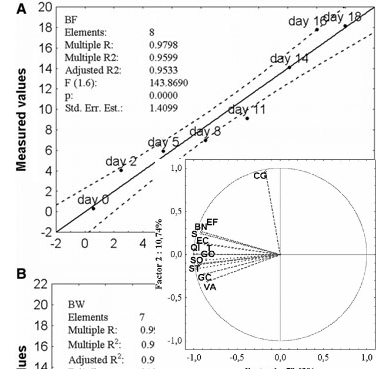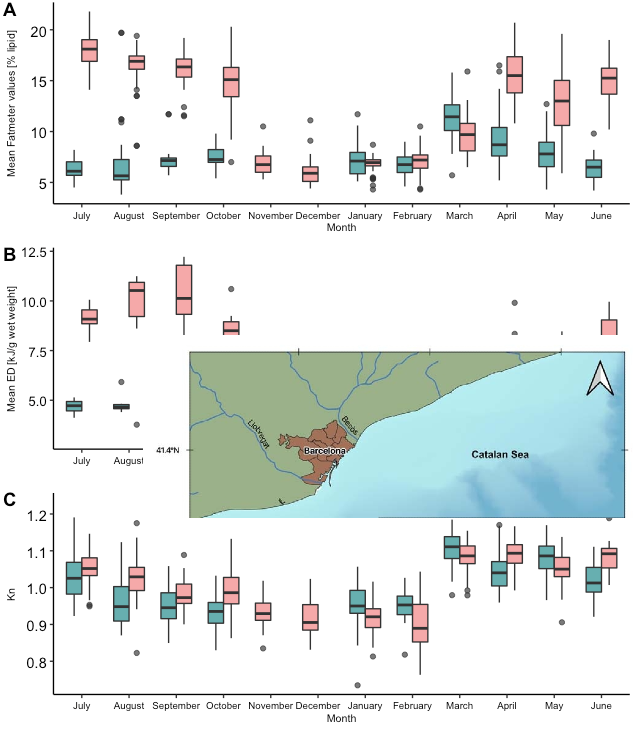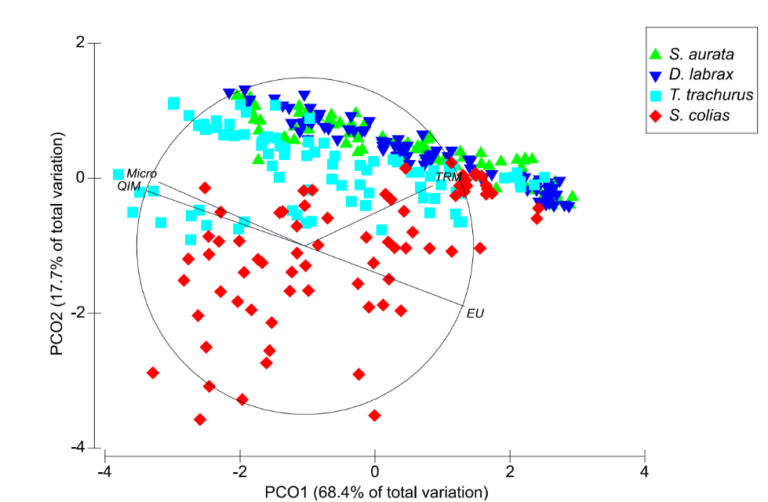Fish Freshness Meter (Torrymeter) used to Predict Estimate of Freshness Index in Farmed Sea Bream
| Title | Design of Predictive Tools to Estimate Freshness Index in Farmed Sea Bream (Sparus aurata) Stored in Ice |
| Article Written by | Juan Calanche, Selene Pedrós, Pedro Roncalés, José Antonio Beltrán |
| Research Done at | University of Zaragoza, Spain University of Orient, Venezuela University College of Dublin, Ireland |
| Published Date | Jan. 8, 2020 |
| Fish Species | Sea bream |
| Key Words | partial least square regression; modelling; fish quality tools; shelf life |
What the research is about
In the realm of seafood freshness assessment, maintaining a high level of precision and accuracy is crucial to ensure consumer satisfaction. The article titled “Design of Predictive Tools to Estimate Freshness Index in Farmed Sea Bream (Sparus aurata) Stored in Ice” delves into the significance of employing predictive tools, particularly the Torrymeter, in determining the freshness index of farmed sea bream. This article is highly relevant to industry professionals, researchers, and tech enthusiasts who seek advancements in seafood quality assessment.
This research studied sea bream freshness evolution through storage time in ice by determining different quality parameters and sensory profiles. Predictive models for freshness index, storage time, and microbial counts were designed from these data. Physico–chemical parameters were assessed to evaluate the quality of fish; microbial growth was controlled to ensure food safety, and sensory analyses were carried out to characterize quality deterioration. Predictive models were developed and improved with the aim of being used as tools for quality management in the seafood industry. Validation was conducted in order to establish the accuracy of models.
There was a good relationship between the physico–chemical and microbiological parameters. Sensory analysis and microbial counts allowed for the establishment of a shelf-life of 10 days, which corresponded to a poor quality (according to the European Community’s system of grading fish for marketing purposes), with a freshness index lower than 50%. Sensory profiles showed that gill and flesh texture were the most vulnerable attributes during storage in ice related to spoilage. The predictive models for the freshness index (%) and ice storage time (h) exhibited an accuracy close to 90% following practical validation.
The challenge in seafood freshness evaluation lies in finding a method that provides objective measurements to determine whether a fish is fresh or not. While sensory analysis is the most commonly used method, it is subjective in nature. In this article, the Torrymeter served as a solution to this problem. By measuring the electrical properties of the fish muscle, the Torrymeter enabled a more accurate assessment of seafood freshness, overcoming the limitations of solely relying on sensory analysis.
Based on the discussed article content, the Torrymeter showcased several notable benefits:
- Objective Measurement: The Torrymeter provides an objective measurement of seafood freshness by analyzing the electrical properties of the fish muscle, reducing the reliance on subjective sensory analysis.
- Correlation with Sensory Scores: The Torrymeter demonstrated a good correlation with fish freshness sensory scores, indicating its reliability and accuracy in evaluating seafood quality.
- Standardization of Sensory Analysis: The Torrymeter contributes to the standardization of sensory analysis in the fish sector. By providing objective measurements, it assists in improving methodologies and training panels, thereby enhancing the accuracy and objectivity of sensory evaluations.
The Torrymeter finds utility in various scenarios related to seafood quality assessment. Here are a few examples extracted from the article:
- In commercial settings, the Torrymeter can be used to monitor spoilage by assessing the freshness index of seafood. It serves as a valuable alternative to traditional sensory analysis for businesses that strive towards precise seafood quality control.
- In research laboratories or seafood processing plants, the Torrymeter can be employed to study the effects of different storage conditions on the freshness of farmed sea bream. This enables researchers to optimize storage methods and extend the shelf life of seafood products.
- In seafood distribution networks, the Torrymeter can assist in quality assurance by evaluating the freshness of sea bream stored in transit or at various stages of the supply chain. This ensures that only fresh seafood reaches the end consumer.
Research conclusion
Predictive models were developed for the freshness index (%), ice storage time (h) and microbial counts; all of these models exhibited an accuracy of close to 90% following practical validation. The findings of this study suggest that the predictive tools designed may be proposed as a valuable alternative to monitor spoilage by assessing freshness as a key aspect of seabream quality. These tools allow for the possibility, too, of avoiding the use of sensory experts and microbiological analysis for estimating freshness degree, time of storage in ice, and microbial load. In a food safety management system, the proposed tools could be employed for quality control and assessment within the cold chain of seabream, as well as for determining freshness loss during logistic and marketing operations. Combining standard traditional methods with these new tools could help decision making and provide additional benefits such as less time consumption, easiness to perform, sensitivity, automation, and the use of non-destructive and non-invasive techniques.
The Torrymeter represents a significant contribution to the conclusion of the article by providing an innovative solution to the challenge of seafood freshness assessment. By quantifying the electrical properties of fish muscle, the Torrymeter offers an objective measurement of seafood freshness, which enhances the accuracy and reliability of quality evaluation. Its correlation with sensory scores establishes its credibility as a valuable tool for assessing seafood freshness. Overall, the Torrymeter bridges the gap between subjective sensory analysis and objective measurements, advancing the field of seafood quality assessment and ensuring consumer satisfaction.
Assurant Innovations take
In the study “Design of Predictive Tools to Estimate Freshness Index in Farmed Sea Bream (Sparus aurata) Stored in Ice,” the Torrymeter device proved to be an invaluable asset, making positive contributions and providing crucial insights.
Torrymeter was one of the tools used to validate the fish freshness “Predictive” model and it correlated well with days in ice storage and quality of the fish as compared with sensory and chemical analysis.
The inclusion of the Torrymeter in this study facilitated accurate and reliable measurements of the electrical properties of fish muscles, which directly correlate with freshness. By employing the Torrymeter, researchers were able to assess the freshness index of the farmed Sea Bream stored in ice more precisely and objectively than ever before. This device not only saved time but also provided consistent and reproducible results throughout the study.
Understanding the potential skepticism of the target audience, it is essential to highlight the concrete benefits of the Torrymeter. Firstly, it offers a significant improvement over subjective evaluations based solely on sensory analysis. By providing an objective and quantifiable measurement of fish freshness, the Torrymeter enables researchers, fish suppliers, distributors, and retailers to make informed decisions based on empirical data rather than personal opinions.
Another crucial advantage of the Torrymeter is its user-friendly nature, ensuring ease of use and immediate results. This feature is particularly important, as it minimizes the burden on researchers and industry professionals, allowing for efficient and streamlined operations. Moreover, the device’s accuracy and reliability eliminate the margin of error associated with traditional sensory evaluations, thus greatly reducing any potential inconsistencies and providing a more precise assessment of fish quality.
The Torrymeter’s contributions extend beyond the specific study mentioned. Its usage has been proven in various research papers and industry applications to effectively determine fish freshness and assist in evaluating the shelf life of seafood products. By adopting the Torrymeter, professionals in the field can enhance the overall quality control processes within their organizations, leading to a significant reduction in consumer dissatisfaction, wastage, and financial losses.
In conclusion, the Torrymeter device has made substantial positive contributions to the study and research paper. Its benefits include objective freshness assessment, efficiency in evaluating fish quality, user-friendly operation, precision, and proven reliability. For those on the fence about trying out the Torrymeter, I encourage you to embrace this powerful tool and take advantage of its ability to revolutionize your fish quality control processes, setting you apart as a leader in the industry.
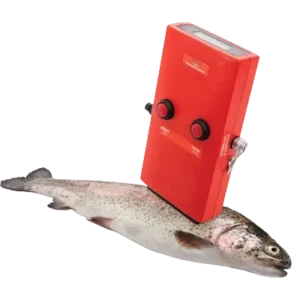
Fish Freshness Meter (Torrymeter)
To Purchase, call or email



